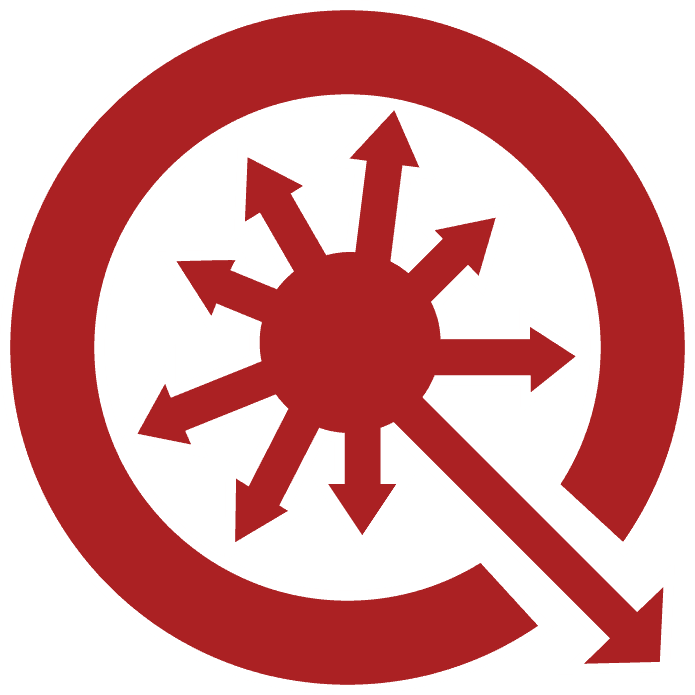Thanks for your purchase of a turbocharger for your Deutz, Perkins, or John Deere diesel engine. Here are some handy tips.
- General
- When installing a turbocharger, be certain there is no foreign material in the air cleaner and the ducting to the compressor inlet or in the exhaust manifold. Even small or soft objects will cause extensive damage to turbocharger wheels.
- Take care to avoid getting dirt or debris into the turbocharger openings especially on Deutz powered stump grinders and concrete saws.
- The torque of the bolts on the compressor and turbine housing has been set properly by the manufacturer. Any realignment of end housing by loosing these bolts is strictly prohibited.
- Installation and Pre-Oiling of Turbochargers
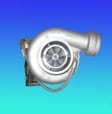 Remove old gasket from exhaust manifold mounting flange, inspect flange for erosion and flatness and install a new gasket if necessary.
Remove old gasket from exhaust manifold mounting flange, inspect flange for erosion and flatness and install a new gasket if necessary.- Inspect oil drain and supply lines for kinking, clogging, restrictions and other signs of deterioration. Clean all debris from the turbo area. This is particularly important on Deutz diesels used in concrete saws and Perkins diesels on wood chippers.
- Install turbocharger on engine using all new gaskets and o-rings (when needed), but do not connect the compressor inlet and oil supply line. Tighten the nuts or bolts attaching the turbocharger to the exhaust manifold. Using high temperature lubricant on these threads is recommended.
- Fill the oil inlet hole with clean engine oil and spin the compressor wheel several times to coat the bearings with oil. Refill the oil inlet hole and connect the oil supply line.
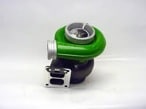 If the compressor wheel cannot be freely spun by hand or if there is any indication of rubbing or scraping, check the turbo before starting the engine. One cause of wheel rubbing is a cocked compressor or turbine housing. Connect the pipe or hose from the outlet of the air filter to the compressor inlet.
If the compressor wheel cannot be freely spun by hand or if there is any indication of rubbing or scraping, check the turbo before starting the engine. One cause of wheel rubbing is a cocked compressor or turbine housing. Connect the pipe or hose from the outlet of the air filter to the compressor inlet.- Check lubricant level in engine crankcase. g. Fill the oil filter first if it was changed.
- Start Engine
- Before attempting to start the engine, crank the engine with the fuel shut off for 10 to 15 seconds or until the instruments show oil pressure buildup.
- Start the engine and allow it to run at idle speed for 3 to 4 minutes before accelerating.
- Check oil leaks.
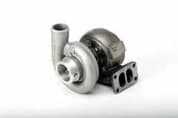 Operating and Maintenance
Operating and Maintenance
OPERATING
- Starting
- Oil-in pressure of a turbocharger should be shown within 3 seconds after the engine has started. If not, the turbocharger may be damaged due to the lack of lubricating oil.
- The engine should be run at idle speed for more than 3 minutes after it was started. After that the oil pressure and temperature should reach the normal value. The lower the surrounding temperature, the longer the engine has to idle.
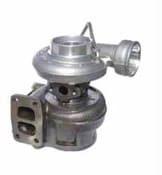 Fill the oil filter full of lubricating oil if it was renewed or cleaned, disassemble oil-in connector, and fill lubricating oil from oil inlet hole on centre housing. Fill fresh lubricating oil in the turbocharger if the engine does not run for more than one week.
Fill the oil filter full of lubricating oil if it was renewed or cleaned, disassemble oil-in connector, and fill lubricating oil from oil inlet hole on centre housing. Fill fresh lubricating oil in the turbocharger if the engine does not run for more than one week.
- Working
- Oil-in pressure should be held between 40 and 70 pounds when the engine is running.
- Inspect abnormal noise and vibration of the turbocharger immediately.
- The lubricating oil pressure, temperature, air inlet temperature and the turbocharger speed should not be over the set value in specification. If it is, stop the engine and fix the problem.
- Stop the Engine
- Don’t stop the engine suddenly if the engine is on full load unless and emergency situation arises. Stop the engine gradually after it is unloaded and idle for 5 minutes.
 The operating method of accelerating, cutoff and taxing is prohibited for a motor-driven vehicle. If the engine stops working, the oil pump doesn’t work either. If this happens, and the turbocharger is in high temperature, it could be damaged without lubricating oil.
The operating method of accelerating, cutoff and taxing is prohibited for a motor-driven vehicle. If the engine stops working, the oil pump doesn’t work either. If this happens, and the turbocharger is in high temperature, it could be damaged without lubricating oil.
Daily Maintenance
The turbocharger and turbo-system must be maintained constantly.
- Check if the pipe system of air-in or air-out of compressor is in good condition. If not, solve the break or leakage problem promptly. If the air-in pipe system of a compressor is broken, the air would enter the compressor from the break, impurity particles could damage the impeller. If the air-out pipe system is broken there would not be enough air entering the cylinder.
- Check if the oil-in or oil-out tube system of the turbocharger is in good condition. If not, solve the leakage problem promptly.
- Tighten all bolts and nuts, especially the bolts of the inlet flange of the turbine housing. If they are loose, vibrations could damage the turbocharger.
- If the noise of turbocharger is abnormal, the engine should be checked and not be started until the problem is solved.
- Renew lubricating oil in a timely manner according to the users manual of the engine.
Working Requirements of Turbocharger with Waste Gate Valve
 In order to improve the turbocharger’s performance, when it works in low and high-speed conditions, a turbocharger with a smaller flow section area and a waste-gate valve is used. When the engine works at high speed, the turbocharger works at high speed too. The air pressure in the compressor becomes high, which can open the waste-gate valve to make the exhaust gas release before entering the turbine housing, and the turbocharger speed becomes lower and the air pressure becomes lower too. When the engine works on low speed, the waste-gate valve is closed, and all exhaust gas is used to drive the turbine without releasing, and makes the turbocharger still work in high speed to increase the air pressure ratio. The waste-gate valve will improve the working of the turbocharger significantly. This is especially true on Perkins diesels.
In order to improve the turbocharger’s performance, when it works in low and high-speed conditions, a turbocharger with a smaller flow section area and a waste-gate valve is used. When the engine works at high speed, the turbocharger works at high speed too. The air pressure in the compressor becomes high, which can open the waste-gate valve to make the exhaust gas release before entering the turbine housing, and the turbocharger speed becomes lower and the air pressure becomes lower too. When the engine works on low speed, the waste-gate valve is closed, and all exhaust gas is used to drive the turbine without releasing, and makes the turbocharger still work in high speed to increase the air pressure ratio. The waste-gate valve will improve the working of the turbocharger significantly. This is especially true on Perkins diesels.
Besides all mounting and operating requirements as above, the users should know the special demands that follow for a turbocharger with a waste-gate valve.
- The manufacturer has adjusted the opening pressure of the turbocharger to the correct setting. Adjusting it is prohibited.
- The actuator on the waste-gate valve and the compressor should be far away from the exhaust pipe and other hot sources.
- The rubber hose connecting the waste-gate valve and the compressor should be far away from the engine and other hot sources.
- Don’t adjust the length of the waste-gate valve’s drawbar. It could affect the opening pressure.
- Don’t adjust the compressor’s angle to the turbine housing.
- Don’t use the waste-gate valve as a step or handle when the engine is being repaired.
- The rod of the actuator can’t support any weight. Don’t carry the turbocharger by using it and don’t bend it.
- The waste-gate valve can’t be repaired, it should be replaced.
For more information on installing a turbocharger, please see Form #24: Dr. Diesel’s Turbocharger Installation Manual.

